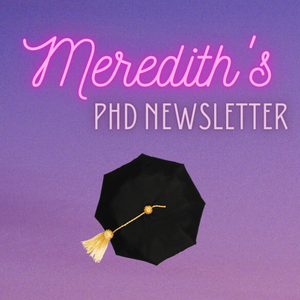Making Change at the V&A
This is my last email about London, though I will probably still send a few updates from the Deaf History International conference in Ghent. But I’m so proud of this bit I have to share it with you.
Several friends sent me links to the V&A’s powerful Design & Disability exhibition, so of course I had to visit. I met its curator, Natalie Kane, when they visited the National Deaf Life Museum in spring 2023, and we had fantastic conversations about deaf accessibility in museums. When they saw I was going to be in London, they invited me to meet them for a tour of Design & Disability (and got me in free instead of paying £16!).
It is a phenomenal exhibition, though, and worth the admission price. It includes the work of multiple d/Deaf artists, but what pleased me the most was its thoughtful design.
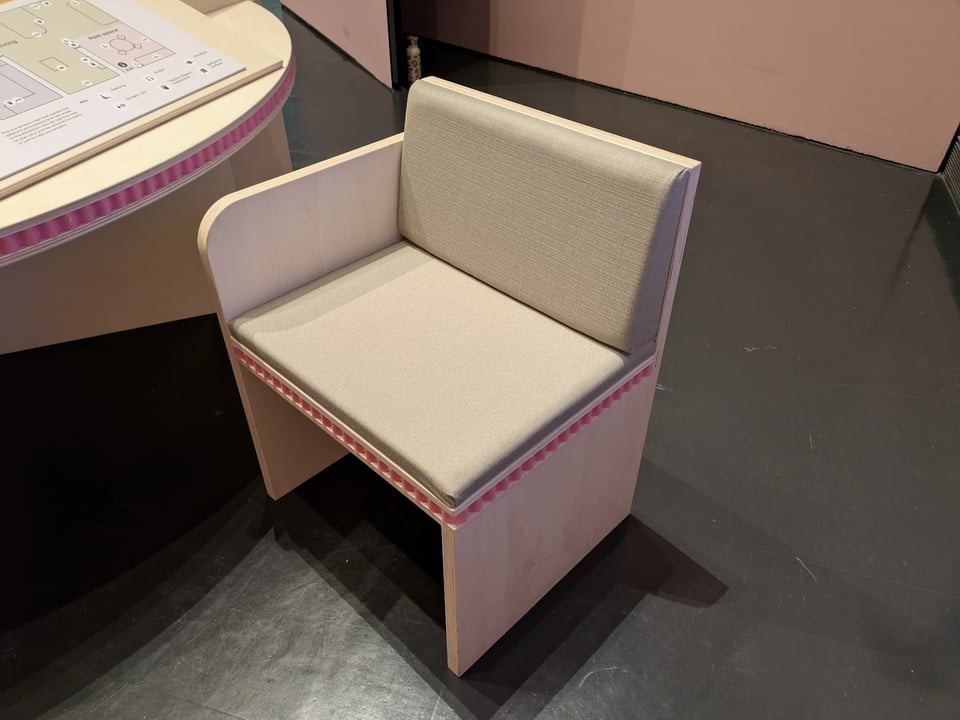
The design of the exhibition was based on DeafSpace principles, and included reflective surfaces to help people see around corners, holes in walls to aid in communication, and pathways wide enough for two people signing to each other and two wheelchairs alongside each other.
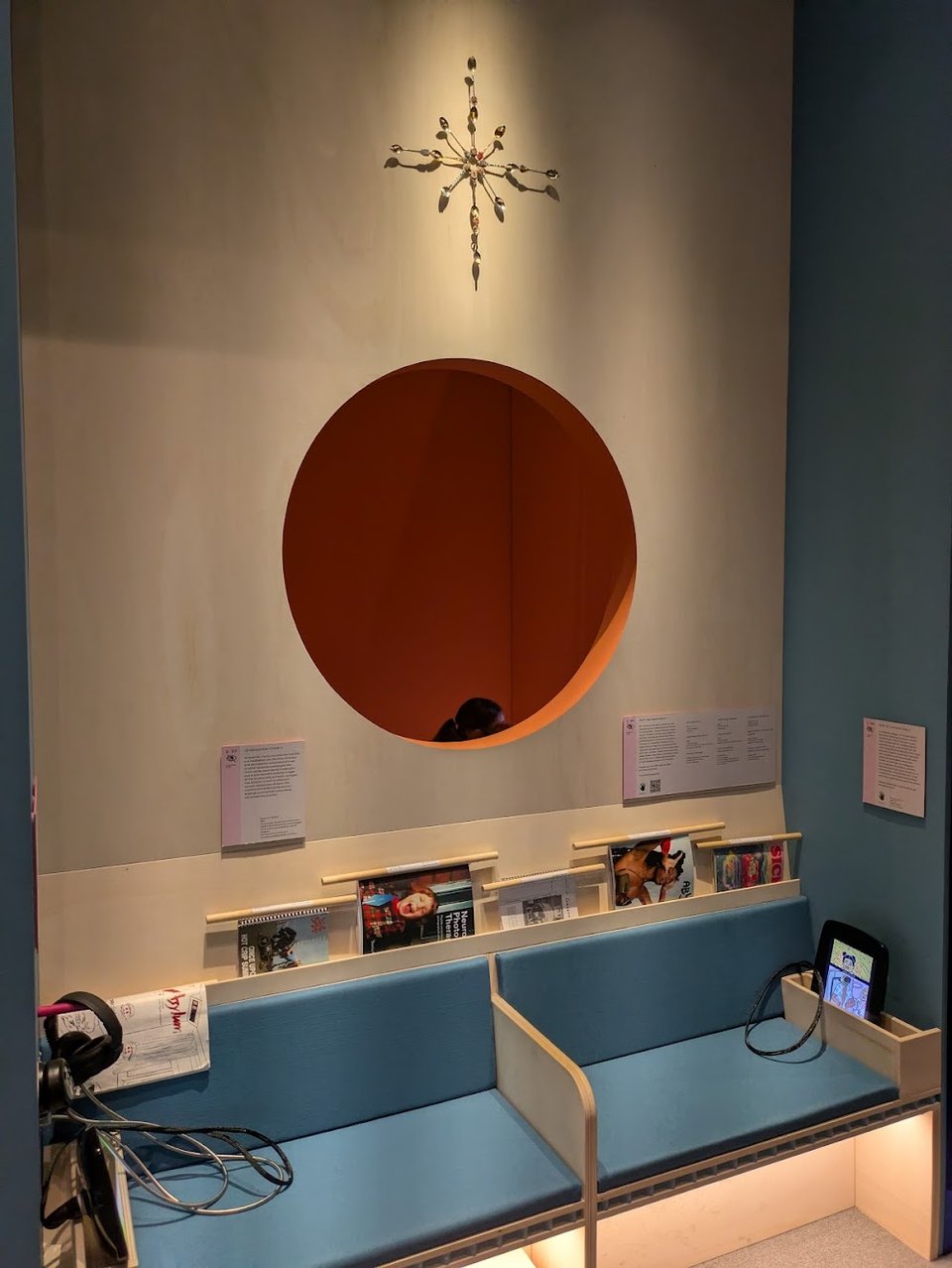
One piece featured in the exhibition was Carmen Papalia’s Mobility Device, which was accompanied by a haptic bench. Unfortunately it was not as well-programmed as the ones at Musical Thinking at SAAM (which opened a few weeks after Natalie was in DC), but it was still a good try.
Another work I was delighted to see was from Finnegan Shannon’s Do You Want Us Here or Not? series, and yes, I absolutely sat on it. I’ve loved their work for a while and was happy to see multiple works by them in the exhibition.
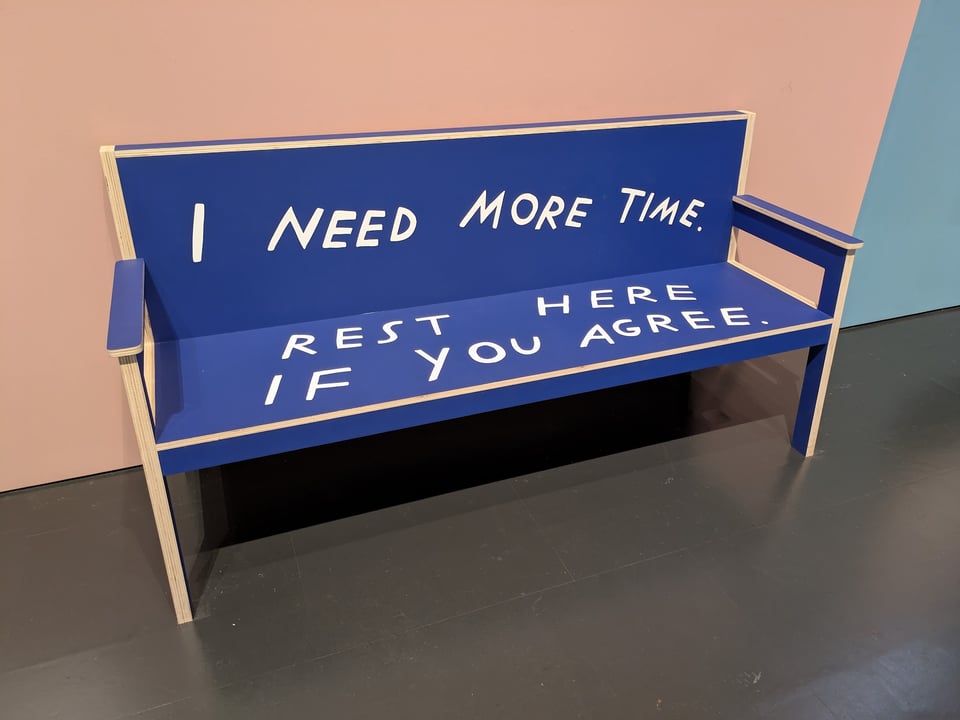
But here is the real magic from this exhibition. A friend told me about this beforehand, but I was still unprepared for seeing it in real life: my name in the acknowledgments section. My conversation with Natalie really stuck with them, and they learned a lot from me. In fact, the exhibition took the shape it did in part because of that conversation. I made a difference in an exhibition. Not just any exhibition, but one at the Victoria and Albert Museum, founded in 1852 in London, the world’s largest museum of applied arts, decorative arts, and design. I’m so grateful to Natalie for this acknowledgment - it really shows that my work is important. My supervisors told me so two days prior, and my friends and family have been telling me this for years, but this brought it home.
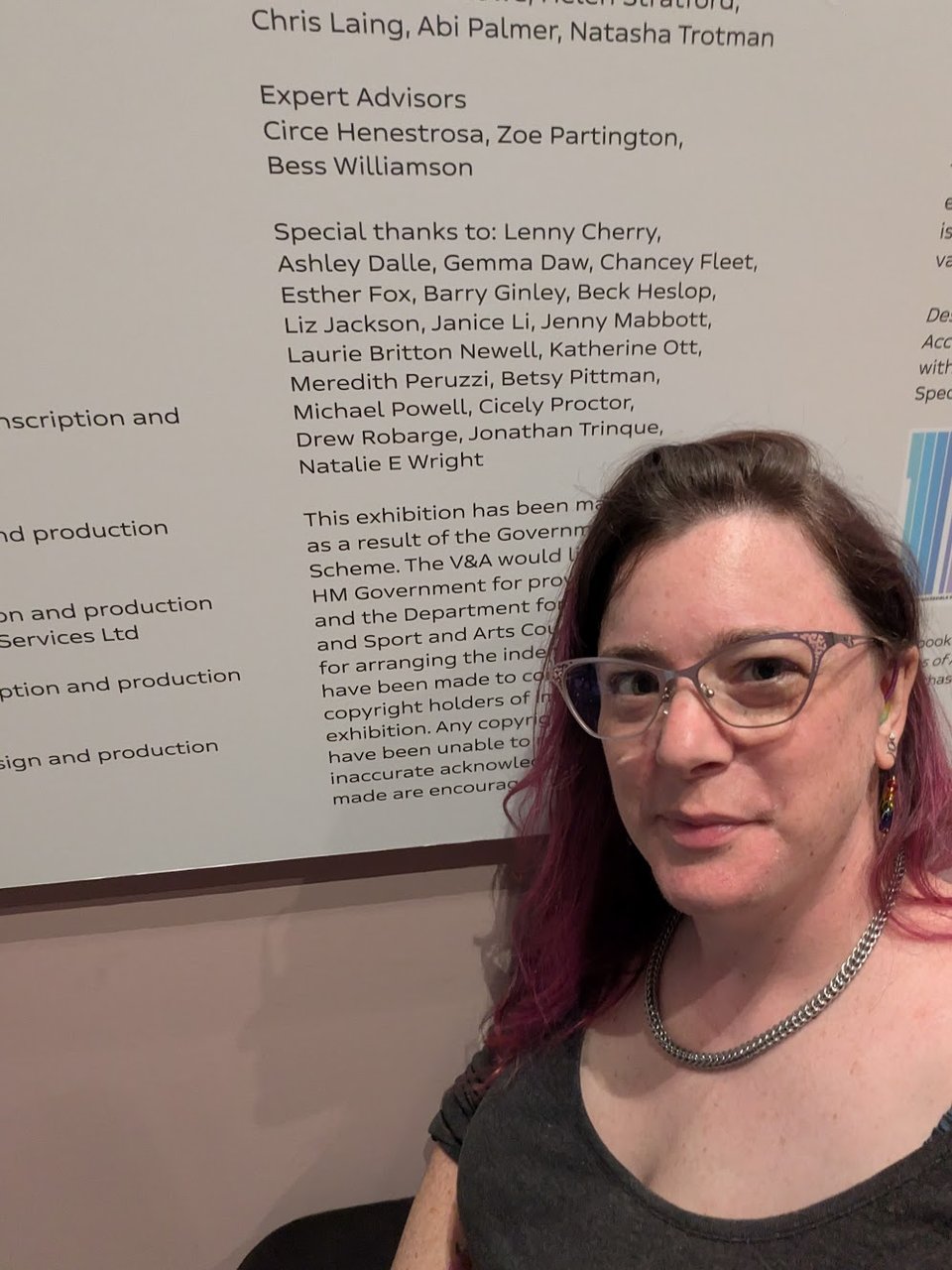
So there I am, at the V&A, with my name on the wall. How incredible is that?
I hope my work continues to reach museums around the world and they make changes to improve accessibility for deaf visitors.
